Vibrations can be a car owner’s worst nightmare. They can indicate a serious underlying issue, or they might simply be a minor annoyance. When a vehicle is stationary yet vibrates, it raises a unique set of challenges for diagnostics. Understanding the root causes of these vibrations is essential for maintaining vehicle integrity and ensuring safety. In this article, we will explore the common causes of vibrations in stationary vehicles, how to diagnose them, and potential solutions to mitigate these issues.
- Understanding the Basics of Vehicle Vibrations
- Steps to Diagnose Vibrations in a Stationary Vehicle
- 1. Visual Inspection
- 2. Listen for Unusual Noises
- 3. Check Engine RPMs
- 4. Use Diagnostic Tools
- 5. Test Drive (If Possible)
- Common Solutions for Diagnosed Issues
- Unpacking Engine Issues
- Transmission Troubles
- Wheel and Tire Health
- Brake System Insights
- Exhaust System Evaluation
- Preventive Measures
Understanding the Basics of Vehicle Vibrations
Before diving into diagnosis, it’s crucial to understand what causes vibrations in vehicles. Typically, vibrations occur due to imbalances or misalignments within the car’s components; When a vehicle is stationary, these vibrations can stem from several sources:
- Engine Issues: Problems with the engine mounts or internal engine components can lead to vibrations.
- Transmission Problems: A malfunctioning transmission can cause vibrations that may be felt throughout the vehicle.
- Wheel and Tire Condition: Flat spots on tires or unbalanced wheels can cause vibrations, even when the vehicle is not moving.
- Brake System Faults: Issues with brake components, such as warped rotors, can lead to noticeable vibrations.
- Exhaust System Issues: Loose or damaged exhaust components can cause vibrations that resonate through the vehicle.
Steps to Diagnose Vibrations in a Stationary Vehicle
Diagnosing vibrations in a stationary vehicle requires a systematic approach. Here’s how to effectively identify the source of the problem:
1. Visual Inspection
Start with a thorough visual inspection of the vehicle. Look for:
- Damaged engine mounts or transmission mounts.
- Worn or cracked tires.
- Loose or damaged exhaust components.
- Unbalanced wheels.
2. Listen for Unusual Noises
Turn on the engine and listen closely for any unusual noises that accompany the vibrations. This can provide clues about the source:
- A knocking noise may indicate an internal engine issue.
- Rattling can suggest loose components in the exhaust system.
3. Check Engine RPMs
With the vehicle stationary, observe the engine RPMs. A fluctuating idle can indicate issues with the engine or fuel system. If the vibrations correlate with RPM changes, further investigation of the engine components is warranted.
4. Use Diagnostic Tools
Utilize diagnostic tools such as:
- Vibration analysis equipment to measure frequency and amplitude of vibrations.
- OBD-II scanner to check for engine codes that could indicate malfunctions.
5. Test Drive (If Possible)
If safe to do so, take the vehicle for a short test drive. This can help determine if the vibrations persist while in motion, which can aid in pinpointing the issue.
Common Solutions for Diagnosed Issues
Once the source of the vibrations is identified, the next step is to implement appropriate solutions:
- Replace Engine or Transmission Mounts: If mounts are damaged, replacing them can significantly reduce vibrations.
- Wheel Balancing: Ensure that wheels are properly balanced to prevent vibrations caused by uneven weight distribution.
- Tire Replacement: Worn or damaged tires should be replaced to ensure a smooth ride.
- Brake Repair: Address issues with brake components, such as warped rotors, to eliminate vibrations during braking.
- Exhaust Repairs: Tighten or replace loose exhaust components to reduce vibrations from the exhaust system.
Diagnosing vibrations in a stationary vehicle is a critical skill for car owners and mechanics alike. By understanding the potential causes and following a systematic approach to diagnosis, one can effectively identify and resolve these issues. Remember, while some vibrations may be minor, others can signify serious problems that require immediate attention. Regular maintenance and prompt diagnosis can ensure a smoother, safer driving experience.
In the end, whether you’re a seasoned mechanic or a concerned vehicle owner, the key is to stay proactive about vehicle care and address any vibrations before they escalate into larger issues.
Once you’ve identified the source of vibrations in your stationary vehicle, the path ahead can take several routes. Each potential issue demands specific attention, and understanding these nuances can save both time and money in repairs.
Unpacking Engine Issues
If the vibrations are indeed traced back to engine problems, the first course of action should be to examine the engine mounts. These components are designed to absorb vibrations, and if they’re worn or damaged, they can lead to excessive movement. Replacing worn mounts can restore stability and reduce vibrations significantly. Additionally, checking for misfires or irregularities in fuel delivery can prevent further complications. Issues like a faulty spark plug or clogged fuel injector can exacerbate vibration problems, making it crucial to address them promptly.
Transmission Troubles
When the transmission is at fault, it’s typically due to worn components or low fluid levels. A thorough inspection of the transmission fluid can reveal whether it’s clean and at the proper level. If the fluid appears dark or has a burnt smell, it may need to be replaced. In some cases, further inspection of internal transmission parts might be necessary, especially if the vibrations correlate with specific RPM ranges.
Wheel and Tire Health
For vibrations originating from the wheels or tires, it’s essential to check for even wear patterns. Uneven wear can signal alignment issues or improper inflation. Regular tire rotation and balancing should be part of any vehicle maintenance routine to prevent vibrations. If a tire is damaged or shows signs of a flat spot, replacement is usually the best option to ensure a smoother ride.
Brake System Insights
In cases where vibrations are felt when the brakes are engaged, it’s often due to warped rotors or worn brake pads. Inspecting the brake system for wear and tear is critical. Resurfacing or replacing rotors, alongside changing pads, can eliminate vibrations and enhance braking performance. Furthermore, ensuring that all brake components are firmly attached can prevent vibrations stemming from loose hardware.
Exhaust System Evaluation
Lastly, vibrations that resonate from the exhaust system can often be traced back to loose or damaged components. A quick inspection of hangers and connections can determine if adjustments or replacements are needed. A well-secured exhaust system not only minimizes vibrations but also improves overall vehicle performance and fuel efficiency.
Preventive Measures
While diagnosing and repairing existing vibrations is vital, taking preventive measures can save future headaches:
- Regular Maintenance: Schedule routine inspections and maintenance to catch potential issues before they escalate.
- Tire Care: Keep tires properly inflated, rotated, and balanced to prevent uneven wear.
- Fluid Checks: Regularly check and replace engine oil, transmission fluid, and brake fluid as needed.
Diagnosing vibrations in a stationary vehicle is more than just identifying a nuisance; it’s about understanding the intricate workings of automotive engineering. With a keen eye and a systematic approach, vehicle owners can maintain their cars in peak condition. By addressing vibrations promptly and implementing preventive measures, you can ensure a smooth, safe ride for years to come. Remember, your vehicle’s health is a reflection of your care—stay proactive, and let your car thrive.
Ultimately, every vibration tells a story. By becoming attuned to your vehicle’s language, you’ll not only enhance its performance but also extend its lifespan. Empower yourself with knowledge, and your vehicle will thank you with every journey.

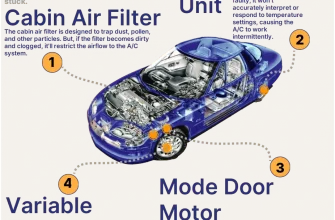
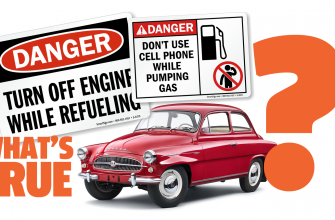
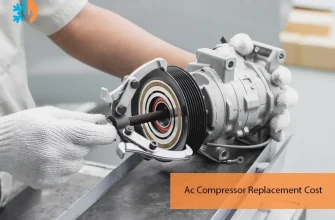


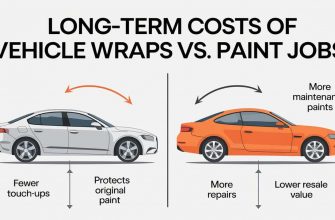
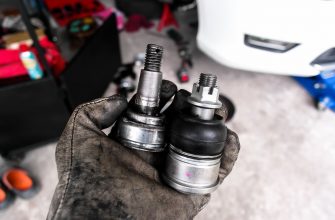

Great job on this piece! The emphasis on visual inspection is crucial, and I’ll definitely be checking my vehicle more thoroughly now.
A fantastic resource for diagnosing vehicle vibrations. The step-by-step approach makes it easy to follow and implement.
Very informative! The section on engine issues resonated with me as I’ve experienced similar problems. Thanks for the insights!
This article is a must-read for anyone who owns a car. It demystifies vibrations and offers practical solutions that are easy to understand!
I appreciate how detailed this article is. It really breaks down complex issues into understandable segments. Great read for car owners!
This article provides a clear and concise overview of the causes of vibrations in stationary vehicles. I found the diagnostic steps particularly helpful!
I learned so much from this article! The common causes were explained well, and I feel more equipped to deal with any potential issues.